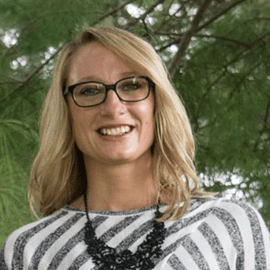
Journalists and Emergency Managers Discuss Disaster Response
Communication is critical in a disaster, both in the emergency response, and in increasing public knowledge. In fact, we know effective media coverage can save lives in a disaster by increasing the quality of decisions made by the public. Emergency managers and journalists alike have an underlying goal to protect the public, and if they work together, information is likely to be more accurate and delivered more quickly to those who need it. Crisis communication scholars have, therefore, encouraged emergency managers to view the media as a partner in disaster response. However, in research and practice, the emergency manager-media relationship has been described as one comprising basic mistrust and perhaps even mutual dislike. Emergency managers believe journalists often sensationalize stories to stir up panic and prosecute government entities regardless of the response effort; journalists believe emergency managers frequently obstruct rather than facilitate the flow of information to the public.
To examine the communication issues inherent to the emergency manager-media relationship, a special session during the National Press Foundation’s Understanding Violent Weather Workshop was designed to engage journalists and emergency managers in an open discussion. Nineteen journalists and three emergency managers participated, and comments were presented as helpful and encouraging toward both the emergency managers and the journalists. And yet, an ‘‘us against them’’ mentality permeated the conversation. My analysis revealed communication issues that can inhibit collaboration between emergency managers and journalists include stereotypical judgments, a lack of trust, paradoxical challenges, and unrealistic expectations.
Journalists in the session felt their role was to represent their audience, while they stereotypically perceived the emergency managers to represent political entities. The emergency managers, conversely, felt their role was to represent the emergency response community, while they perceived the journalists to represent all stereotypical sensationalized media. An interesting finding in my study was related to the common communication issues of trust and honesty related to these stereotypical judgments. Whereas previous research has focused on how emergency managers and other officials hide information from journalists to prevent public panic and negative media coverage, in my study, the journalists were called out for trying to hide their story angle from the emergency managers. The journalists admitted to withholding information from emergency managers because they were afraid if they didn’t, the emergency managers would withhold information from them.
The fact that emergency managers report to elected officials was offered as a reason for the lack of trust. However, the emergency managers in this study did not see themselves aligned with the politicians they answer to, and, in fact, the emergency managers commented that sometimes a negative story can assist them in drawing attention to policy and budget issues that are not being addressed by the politicians. The emergency managers stated specifically that they would not withhold information to try to prevent a journalist from running a negative story--they just want a heads up so they can prepare to deal with the backlash undoubtedly coming from the elected officials. The lack of trust between emergency managers and journalists was based not on personal interactions, but on the other party’s perceived affiliation to larger government and media structures.
A paradoxical challenge faced by emergency managers is that they have a responsibility to both protect the disaster scene and allow journalists to cover what is a newsworthy event. According to the emergency managers in the session, communicating with the media is not the priority, and they emphatically agreed that if a journalist tried to sneak behind the police tape to get an inside scoop, that journalist would be restricted from any future event because they could put others in danger. Emergency managers may, understandably, be focusing on the lives within the disaster area; however, they cannot discount the importance of communicating with those outside the area. In a crisis, an information void can be quickly filled by rumor and speculation, which puts the public in further danger and discredits the emergency department’s ability to manage the disaster.
Another issue identified in the session was unrealistic expectations. Emergency managers expected journalists to wait to run a story until the emergency manager could return their call or grant them access to the disaster scene. Journalists expected emergency managers to serve as public information officers. Especially in smaller communities, emergency managers are often departments of one, managing both the response and communication efforts of the department. To improve communication, the session participants suggested that journalists should get to know their local emergency managers and how best to contact them during a disaster, and also be aware of or at least know how to access the public policies and plans in the area (e.g., the hazard mitigation plan and outdoor warning siren policy) to reduce the number of redundant questions asked of an emergency manager and provide the public with a complete story – even if they cannot reach the emergency manager in time.
My study suggests we need to focus not on the role-based positions held by emergency managers and journalists, but instead on the process by which they exchange information before, during, and after a crisis event. Although a more collaborative versus adversarial relationship will most likely improve communication between emergency managers and journalists, the veracity of the information shared is what will increase public awareness and safety in disaster response and recovery. When emergency managers and journalists are better informed about each other’s professions, and when they develop stronger interpersonal relationships, the quality and timeliness of information delivered to the public improves.


